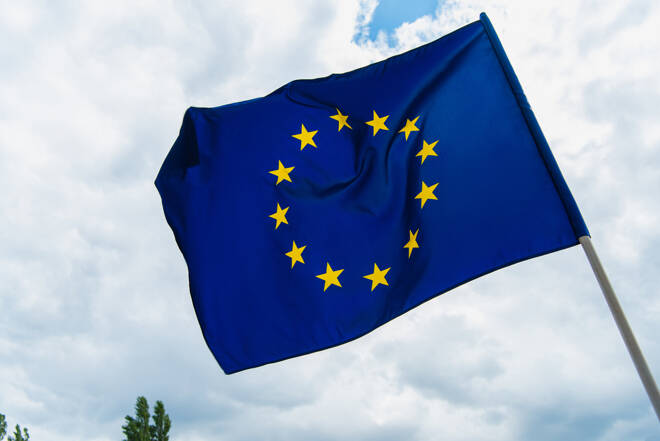Advertisement
Advertisement
German and Eurozone Indicators Beat Forecasts to Deliver Brief Relief
By:
Eurozone and German economic indicators beat expectations today. However, positive sentiment could shift in the coming weeks to pressure the EUR/USD.
It was a busy day for the EUR/USD on the economic calendar. Early in the European session, the German economy was in the spotlight for yet another day.
Industrial production numbers for October garnered interest following the latest PMI numbers and yesterday’s factor orders.
Industrial Production Avoids Dramatic Decline Despite Weak Orders
German industrial production slipped by 0.1% in October versus a forecasted 0.6% decline. In September, production rose by 1.1%. Following Germany’s manufacturing PMI for October, which fell to 45.1 to reflect the most marked contraction since May 2020, the markets may have expected the worst.
According to Destatis,
- Production in industry excluding energy and construction declined by 0.4%.
- Within industry, capital goods production increased by 1.4%, while the production of consumer goods fell by 1.9%. Intermediate goods production decreased by 1.8%.
- Outside industry, energy production was down 7.6%, while production in construction rose by 4.2%.
- Compared with September 2022, the production in the energy-intensive industrial branches slid by 3.6%.
The consumer sector figures aligned with yesterday’s factory orders, painting a grim picture. In October, orders for consumer goods slumped by 6.3%.
The EUR/USD responded to the numbers, falling to a post-stat low of $1.04433 before rising to a pre-Eurozone GDP release high of $1.04843.
Upward revisions to finalized Eurozone GDP numbers delivered further EUR/USD support.
Eurozone Economy Grows by 0.3% in the Third Quarter of 2022
The Eurozone economy expanded by 0.3% in Q3, up from a prelim 0.2%. In Q2, the economy grew by 0.8%. While growth was materially slower, the Eurozone avoided a contraction, providing EUR/USD support.
According to Eurostat,
- Household final consumption expenditure increased by 0.9%, while government final consumption expenditure rose by just 0.1%.
- Gross fixed capital formation increased by 3.6%.
- However, trade terms were GDP-negative. Exports increased by 1.7%, while imports increased by 4.3%.
- By member state, Ireland recorded growth of 2.3% to lead the way, with Cyprus and Malta both seeing growth of 1.3%.
- In contrast, Estonia (-1.8%), Latvia (-1.7%), and Slovenia (-1.4%) recorded the highest declines.
- Compared with Q3 2021, the economy grew by 2.3% in Q3, up from a prelim 2.1%, while down from 4.2% in Q2.
Notably, household final consumption expenditure had a positive contribution in Q3. However, recent retail sales figures suggest a negative impact in Q4, which would weigh on growth.
The EUR/USD responded favorably to the upward revisions, rising from $1.04762 to a post-stat and current-day high of $1.05014 before easing back.
While the stats delivered EUR support, the next set of economic projections due ahead of the ECB monetary policy decision could test the EUR/USD at current levels. Downward revisions to growth would also limit the ECB’s wriggle room to bring inflation down to more palatable levels.
ECB reaction to the latest numbers could also move the dial. Later today, ECB member Fabio Panetta will speak.
EUR/USD Price Action
At the time of writing, the EUR was up 0.31% to $1.04996. Recovering from a low of $1.04434, the EUR struck a post-stat high of $1.05014 before easing back.
The US Session
It is a quiet day ahead, with finalized US nonfarm productivity and unit labor costs for the third quarter in focus. Economists forecast unit labor costs to rise by 3.1% in Q3 versus a prelim 3.5%. A sizeable upward revision would raise more doubts over a December Fed pivot.
According to the FedWatch Tool, the probability of a 75-basis point December hike rose from 21.8% to 23.0%. However, no FOMC members are influencing the reading. The Fed entered the blackout period on Sunday.
Considering euro area growth compared with the US and the latest round of private sector PMIs, monetary policy divergence could swing back in favor of the dollar. The markets are hanging on the words of Fed Chair Powell and ECB President Lagarde, which supported the latest EUR return to $1.05.
About the Author
Bob Masonauthor
With over 28 years of experience in the financial industry, Bob has worked with various global rating agencies and multinational banks. Currently he is covering currencies, commodities, alternative asset classes and global equities, focusing mostly on European and Asian markets.
Advertisement
